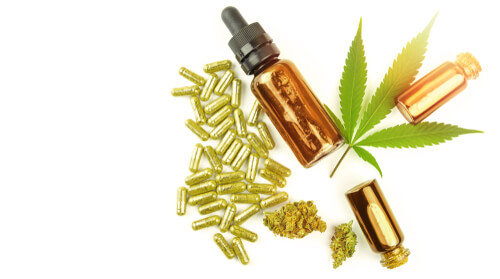
CBD is a cannabis plant compound famous for the therapeutic benefits it offers, in addition to the role it plays as a health supplement. The cannabis family includes plants like marijuana as well as hemp but years of selective breeding have led to the plants developing significantly different properties.
Marijuana was cultivated from the ancient period for medicinal uses whereas hemp was cultivated traditionally for its nutritious seeds and industrially important fiber. The cultivation of hemp for CBD did not begin before that long.
The source of legal CBD products in the US is the hemp plant and not marijuana because marijuana has higher amounts of the intoxicating compound THC. In this session, we discuss the steps involved in obtaining CBD from hemp plants.
-
Selection Of The Suitable Plant Cultivar
Hemp crops grown in greenhouse conditions are appropriate for CBD extraction. There are clear procedures established for the selection of hemp plants for CBD extraction and the crops chosen will have high CBD content and low THC content.
-
Harvesting Bud Material From Mature Hemp Plants
Harvesting time is selected by ensuring that the cannabinoid level in the buds is maximal. During the harvest, the fresh stem of the plants is harvested too. The material will contain more than 0.5% CBD by wet weight.
-
Drying And Powdering The Bud Material
The bud material of the hemp plant is dried by subjecting it to a temperature of 8 to 12 hours. The final product will contain less than 10% moisture. After the hemp plant material is dried, it is milled and converted into a fine powder, and each batch of the powder is packed, labeled, and stored at 4. 100 kg of plant material will produce approximately 10kg of dry leaf material. The leaf material contains about 50% CBD and less than 1% THC.
-
Primary Extraction Of Milled Plant Material
In order to generate a liquid extract of the hemp plant, the powdered hemp plant material is extracted at room temperature with gaseous solvents. The crude extract will contain terpenes, cannabinoids, waxes as well as chlorophyll.About2.5L of the liquid extract can be made from 100 Kg of hemp plant material.
Different methods of extraction are used to extract cannabinoids from the milled plant material. They include CO2 extraction, solvent extraction, olive oil extraction, etc. Supercritical CO2 is used as the extracting agent in CO2 extraction while solvent extraction uses solvents like butane, propane, ethanol, etc and olive oil extraction dissolves hemp extract in olive oil to extract CBD from it.
CO2 extraction is the purest extraction method although it is expensive when compared to other methods. The method uses CO2 converted to a supercritical state (between gaseous and liquid state) by subjecting it to high pressure and low-temperature environments.
The solvent extraction method does not have high associated costs unlike CO2 extraction but the highly flammable nature of the solvents makes the method quite risky. Solvents like butane and propane are toxic in nature, indicating that the traces of the solvent left out in the final product will make it toxic. Ethanol is not a toxic solvent and thus is the safest of all solvent extraction methods.
-
Removal Of Chlorophyll From The Extract
The presence of a high amount of chlorophyll gives an unpleasant bitter taste to the extract and complicates the isolation and purification of important cannabinoids from the hemp extract. The green goop is mixed with a suitable solvent like ethanol and applied to appropriate resin-like alumina, silica, charcoal, etc. The resin binds the chlorophyll, all the while leaving terpenes and waxes unbound.
-
Removal Of Plant Waxes
When the decolorized extract produced in the previous step is cooled to -20 and kept for about 2-3 days, the waxes in the extract begin to solidify facilitating its easy removal by filtration of cold ethanol solution.
-
Concentration Of CBD From The Cannabinoid Rich Material
In order to isolate a CBD enriched material, you may apply a number of processes to the cannabinoid-rich material. The methods include centrifugal partition chromatography, molecular distillation, crystallization, etc.
Adsorption chromatography has a low capital cost when compared to other methods. But it is difficult to achieve greater than 98% purity in a single step of adsorption. On the other hand, Centrifugal Partition chromatography can achieve purity levels greater than 98% even though the cost associated with the method is relatively high.
Crystallization and molecular distillation too can achieve a high level of purity.
Hemp extract undergoes several steps of processing before it attains its final purified form rich in cannabidiol. Three spectrum options are full-spectrum, broad-spectrum, and isolate CBD and the hemp processing steps decide the spectrum option that CBD will belong to. The efficiency of CBD processing steps is decisive of its quality.

